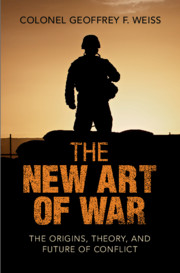Book contents
- The New Art of War
- The New Art of War
- Copyright page
- Dedication
- Contents
- Figures
- Preface
- Acknowledgments
- Introduction: Why Study War?
- 1 The Origins of War
- 2 The Masters of War Theory and Strategy
- 3 Small Wars and Domain Theory
- 4 The Unified War Theory
- 5 The Future of War
- Conclusion
- Appendix
- Notes
- Bibliography
- Index
2 - The Masters of War Theory and Strategy
Published online by Cambridge University Press: 12 August 2021
- The New Art of War
- The New Art of War
- Copyright page
- Dedication
- Contents
- Figures
- Preface
- Acknowledgments
- Introduction: Why Study War?
- 1 The Origins of War
- 2 The Masters of War Theory and Strategy
- 3 Small Wars and Domain Theory
- 4 The Unified War Theory
- 5 The Future of War
- Conclusion
- Appendix
- Notes
- Bibliography
- Index
Summary
Chapter 2 surveys and analyzes the greatest ideas and theorists in war theory and strategy – including the philosophies of Sun Tzu, Thucydides, Machiavelli, Jomini, Clausewitz, Liddell Hart, and Mao. This chapter makes war theory and its recurring themes more accessible by presenting diverse perspectives spanning all eras of military thought from classical through the twentieth century. Each theorist’s background and main ideas are presented, and their strengths and weaknesses are summarized. As history’s preeminent but also most misunderstood war theorist, special attention is given Clausewitz. Principal themes include war’s fluidity, unpredictability, violence, and reciprocity; concentration and momentum; adaptability, intelligence, and relative capacity; military genius; centers of gravity and decisive points; fog, friction, chance, and policy; guerrilla, asymmetric, and nuclear warfare; and war’s moral and physical dimensions.
- Type
- Chapter
- Information
- The New Art of WarThe Origins, Theory, and Future of Conflict, pp. 52 - 148Publisher: Cambridge University PressPrint publication year: 2021

